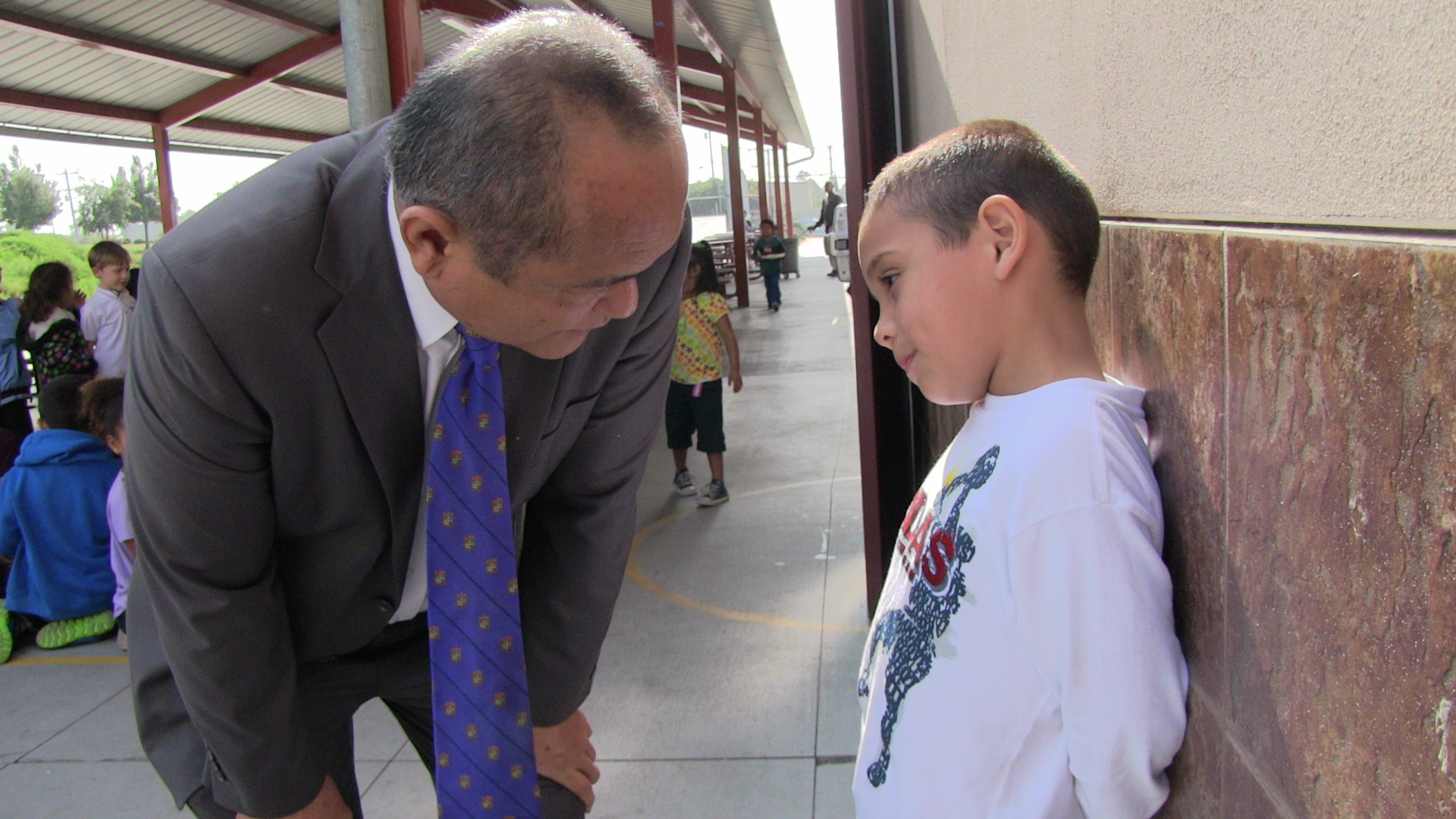
When a child gets in trouble at Cherokee Point Elementary School, Principal Godwin Higa, talks quietly to the student to sort things out. | Photo Credit: Jane Stevens
On this, most school officials agree: “Willful defiance,” a kind of catch-all reason for ejecting students from class is overbroad and problematic.
But for the past few years, legal efforts to curtail its use in California classrooms have been unsuccessful.
That changed over the weekend when Gov. Jerry Brown signed Assembly Bill 420, which will prohibit school districts from using willful defiance as a reason to suspend young students in kindergarten through third grade. Nor will school districts be allowed to expel any K-12 student for willful defiance alone.
Pretty much anything that disrupts class, from having a cell phone go off to refusing to do school work, can be considered willful defiance.
Some districts, like Los Angeles Unified, have already banned its use because it has disproportionately harmed black and Latino students. Even though San Diego Unified has recognized the category can be a problem, it hasn’t been willing to change its policies. The new law, however, will finally force the district’s hand.
To be sure, the new law won’t impact a huge group of students: fewer than 11,000 statewide, EdSource reported.
But the step is in line with a broader shift, both statewide and within San Diego Unified, away from punitive measures like expulsions and out-of-school suspensions that are doled out far more often to students of color.
Instead, San Diego Unified says it’s embracing a restorative justice model that values support and prevention over punishment.
A team a researchers from Harvard visited San Diego Unified last spring to research racial disparities in the district and make recommendations for what could be done better.
The team didn’t hold back when it zeroed in on the discipline problem:
Beginning at the preschool (!) level, students of color are suspended or expelled at nearly three times the rate of white students. The discrimination in application persists even once we account for differences in economic status. We now know that this unequal treatment at school meaningfully exacerbates the achievement gap and is often the initiating force in a vicious cycle of discipline, absenteeism, truancy, academic struggle, and eventual dropout.
According to San Diego Unified, suspension rates correlate with academic achievement within the district. Basically, the higher the school’s suspension rate, the lower the test scores students in those schools put up. That shouldn’t surprise anyone, as it’s difficult to learn when you’re not in school.
The district did not respond to questions about what the new law will mean for San Diego Unified in the future.
But back in August, Vernon Moore, executive director of student services, told me that the district hasn’t been ignoring willful defiance – it simply wanted to make sure other supports were in place before it removed willful defiance as a category for suspension.
But if new law won’t impact too many students, what’s been the holdup?
Disagreement among school officials and educators about how to respond to misbehaving children is part of it.
Not every school principal is keen on giving up his or her authority to say when and why to suspend a student. In fact, similar bills were opposed by administrators and school board organizations in the past, which may have part of the reason Gov. Jerry Brown vetoed them.
Nor are teachers happy to have a tool taken out of their hands. Even if they don’t suspend kids for willful defiance, they like to know the tool is available if they need it, one teacher told me last year. And if misbehaving children are allowed to stay in class, many teachers worry, they could stifle other students’ learning.
So what’s to be done? To understand where San Diego Unified wants to go, it’s helpful to take a look at Cherokee Point Elementary, a City Heights school the district has used as a model.
READ MORE: At Cherokee Point, Kids Don’t Conform to School; School Conforms to Kids
Cherokee Point has essentially eliminated out-of-school suspensions by focusing on everything except punishment. It’s brought in extra student teachers and counseling, nursing and psychology interns. Local nonprofits donate fresh produce, shoes and bicycles – things that matter for their overall well-being, so they have more energy to focus on learning.
A lot of those extras were made possible through external funding, including a California Endowment grant. But that’s also part of what the district wants to replicate: by leveraging resources from nonprofits or universities, it can build up a community around a school.
The challenge will be doing this district-wide.
